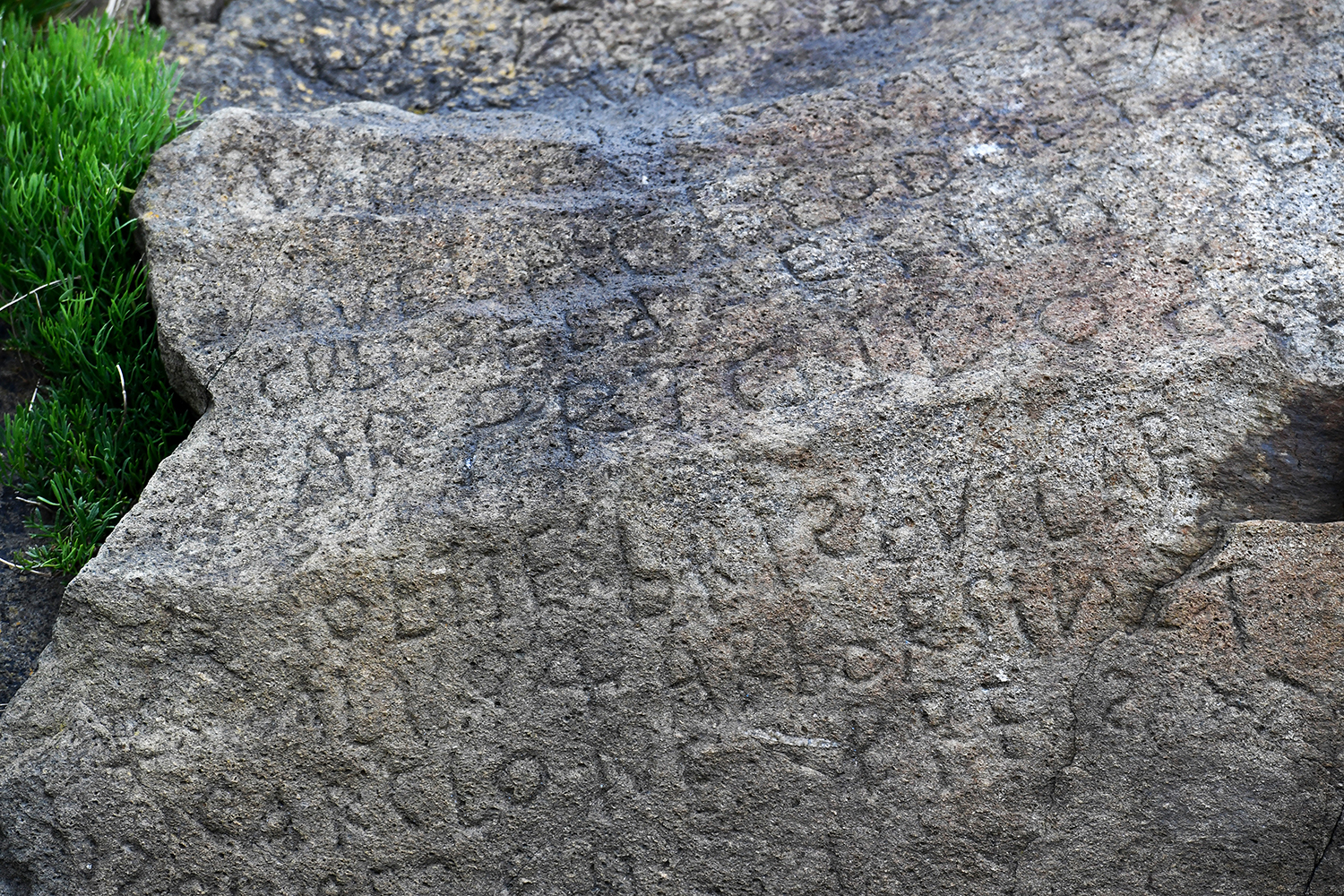The French town where the stone rests is holding a contest to decipher the indecipherable text.
Lenten Campaign 2025
This content is free of charge, as are all our articles.
Support us with a donation that is tax-deductible and enable us to continue to reach millions of readers.
The town of Plougastel-Daoulas in Brittany, France, has discovered a rock that bears a curious inscription. Carved into the stone are about 20 lines of an indecipherable language, which includes characters from the Scandinavian written language (like the Ø letter), as well as some non-alphabetical characters like an engraving of a sailboat and even the Sacred Heart.
The presence of North Germanic lettering alongside the Latin alphabet suggests the writer could have been bilingual. Other clues: the presence of a pictograph of a sailboat could mean he was a sailor or a shipwright, and the presence of the Most Sacred Heart of Jesus might indicate that he was Catholic. Indeed, the message itself may be spiritual in nature.

BBC has an example of a few lines of the text:
“ROC AR B… DRE AR GRIO SE EVELOH AR VIRIONES BAOAVEL… R I OBBIIE: BRISBVILAR… FROIK…AL.”
There are few clues in the inscription as to its origins or who carved it, but it does bear two dates: 1786 and 1787. Town officials say that the area was home to several military installations in those years. This might suggest that the inscription was made by a soldier, or perhaps even one of the builders of the facilities. This is, however, unconfirmed. From the dates it is expected that the engraving is probably about 250 years old.
Town officials in Plougastel-Daoulas have had the inscription studied by experts who cannot seem to decipher the text, so now they’re opening the matter up to the public. They are offering a $2,250 USD prize to the party who can translate the stone. The contest will be open until November, at which time a panel of judges will decide which translation is most likely accurate.
Smithsonian.com reports that Mayor Dominique Cap, of Plougastel, commented:
“We’ve asked historians and archaeologists from around here, but no-one has been able to work out the story behind the rock. So we thought maybe out there in the world there are people who’ve got the kind of expert knowledge that we need. Rather than stay in ignorance, we said let’s launch a competition.”
In honor of French historian and linguist Jean-François Champollion, who was the first to decipher the Rosetta Stone, the contest is officially called “The Champollion Mystery at Plougastel-Daoulas.” Anyone interested in attempting to translate the cryptic message can contact [email protected] to receive photographs of the inscription to work on.
Smithsonian warns that it may be impossible to translate the inscription. They note that there are still many important writing systems that have perplexed experts for years. These include the Indus Valley Script, the early Greek script known as Linear A, and hieroglyphics from the island of Crete.








